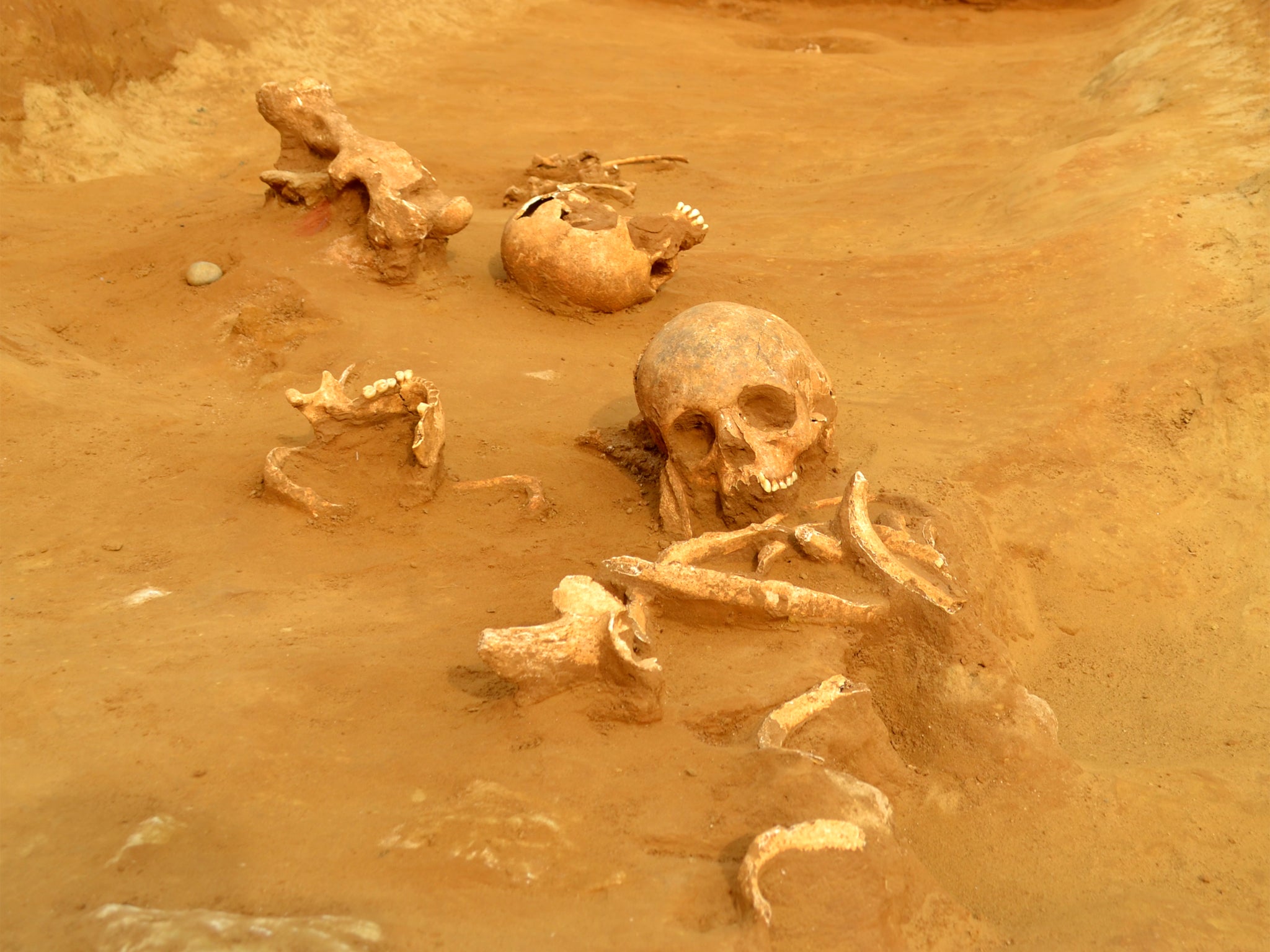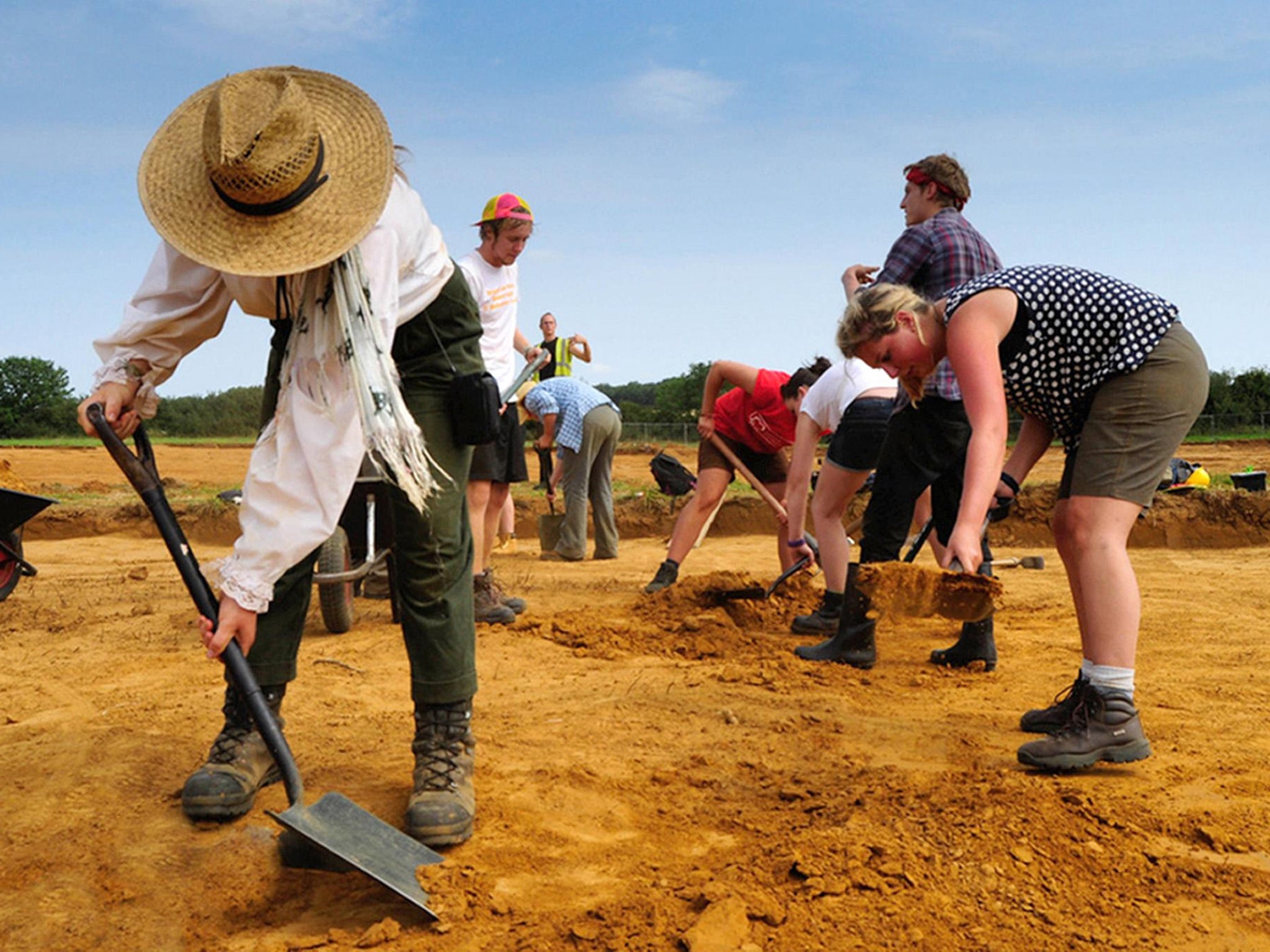Exclusive: Slaughtered bodies stripped of their flesh - a gruesome glimpse of Iron-Age massacre at UK’s largest hill fort
Hundreds if not thousands stripped of their flesh and chopped up, say archaeologists

Excavations in Somerset have revealed a gruesome glimpse of Iron-Age Britain. Archaeologists have discovered evidence of a massacre involving hundreds, if not thousands of people, with some of the slaughtered bodies being stripped of their flesh or chopped up.
Human remains unearthed from an ancient site near Yeovil have cut marks, often in multiple rows, and occurring at the ends of important joints. “It is as if they were trying to separate pieces of the body”, according to Dr Marcus Brittain, the Cambridge archaeologist and head of a major excavation of Britain’s largest Iron-Age hill fort, Ham Hill.
Defleshing signs have been found on other Iron-Age human remains, but the scale of the evidence at this site is particularly dramatic, he said.
Ham Hill is so vast – the size of 123 football pitches surrounded by Iron-Age ramparts – that only a small part has so far been excavated. It is clear from the remains discovered that there are “hundreds, if not thousands of bodies” buried in the site, Dr Brittain told The Independent. “It’s unusual to find this number of bodies on any site, let alone from the Iron Age.”
They are thought to date from the 1st or 2nd century AD, although the site had been occupied for thousands of years. Hill forts generally date from the first millennium BC to the Roman Conquest and are rarely excavated because they are protected ancient monuments.
However, the Ham Hill site contains one of the most important stone materials in southern England, used in the conservation of historic buildings in the region. So, special permission was granted to extend the Ham Hill stone quarry on condition that it funded an important archaeological investigation by the universities of Cambridge and Cardiff.
Its picturesque setting in “green and pleasant lands” jars with the number of human remains found, Dr Brittain said. “It could not be more different to the hill fort’s modern serenity of picnics and dog-walkers.”
The massacre remains unexplained, but it occurred around the start of the Roman invasion. Evidence of Roman military equipment – large ballista bolts – has been found among the bodies. The bolts are heavy and sharp, like arrowheads – “but a hell of a lot bigger,” Dr Brittain said. “They would have been fired by catapult.” One theory is that the Romans executed people in policing and keeping order between indigenous tribes, but it’s unlikely that they did the defleshing because the gruesome practice is rarely associated with them.

Defleshing was linked to Iron Age Britons who often put polished skulls in doorways.
Christopher Evans, director of the Cambridge Archaeology Unit, said that the excavations raised more questions than answers. Further inside the hill fort’s interior, evidence of domestic life from earlier phases of its occupation was found, at a time when people lived in wood and daub houses.
Apart from Iron-Age and Roman pottery, the finds include ritualistic burials – arrangements of human skulls as well as bodies tossed into a pit, left exposed and gnawed by animals. Many of the bodies are predominantly women. “It is weird, there is no doubt,” Dr Brittain said.
There will be a site open day on Saturday.
Join our commenting forum
Join thought-provoking conversations, follow other Independent readers and see their replies
Comments